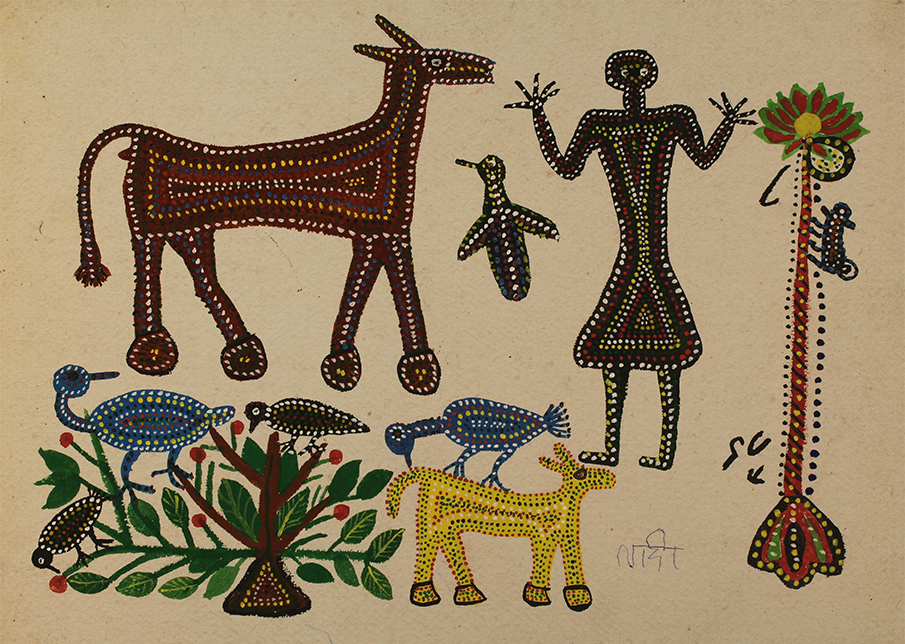
Painting by Lado Bai © Sarmaya Arts Foundation
Art was a form of therapy for Lado Bai long before it became anything resembling a job. After a hard day’s slog at the construction site where she worked in Bhopal, she would seek solace in painting the trees and gods of her village in Jhabua, Madhya Pradesh on the walls and floor of her home. Her talent was discovered in the 1970s by artist Jagdish Swaminathan, then director of Bharat Bhavan. He was at the time overseeing the founding of a new museum within the art centre called Roopanker, and it was this structure that Lado and other members of her Bhil community were engaged in constructing. Like Bhuri Bai, she too went from being a labourer to an artist-in-residence at Bharat Bhavan, which would become the launch pad for many Indian artists of tribal origin.
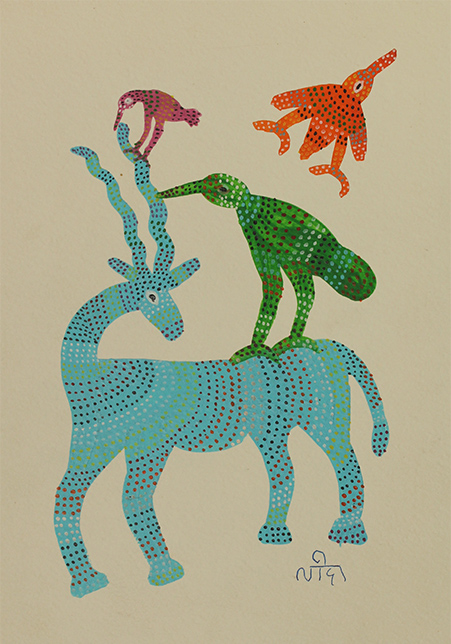
Painting by Lado Bai © Sarmaya Arts Foundation
In Bawadi Badi, where Lado was born and spent the formative years of her life, mural art in the form of Pithora painting is a way to mark seasons, festivals and other important events. These art works are made out of natural dyes on mud walls in honour of the Bhil deity Pithoro Dev or Babo Pithoro and usually by the men of the household. In the big city, however, Lado’s paintings began to take on a new context. Freed from ritualistic meaning and gendered expectations, they became simply windows into a life spent living in harmony with the wilderness.
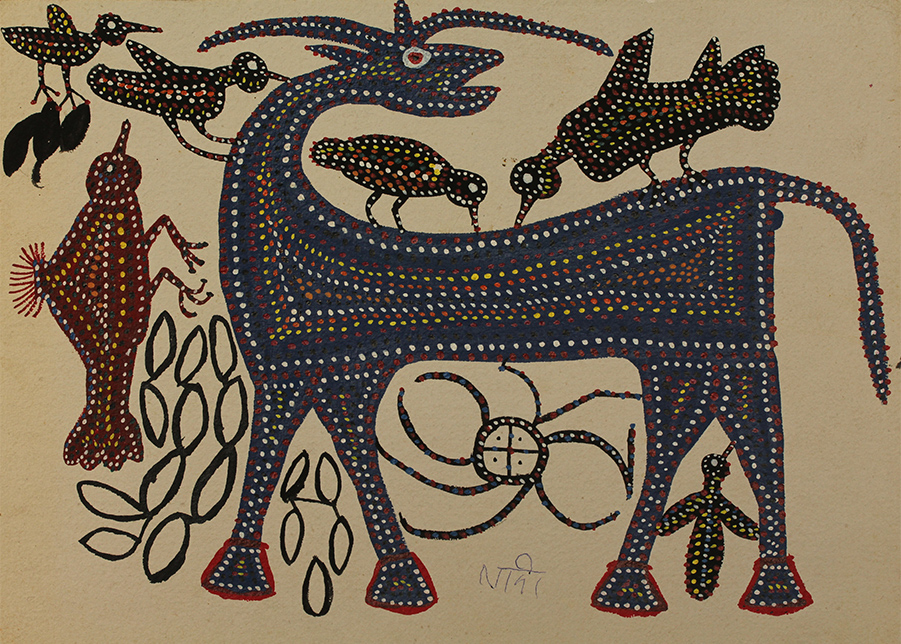
Painting by Lado Bai © Sarmaya Arts Foundation
Lado’s paintings in the Sarmaya collection have at their centre the symbiotic relationships between different species. No creature is alone. The body of a deer represents an ecosystem; insects climb into its sleek coat only to be picked off by birds perched on its antlers. A bird in flight has another right behind riding its tail wind. A tree plays host to animals foraging for fruit. Man fits into this picture without dwarfing any species in importance.
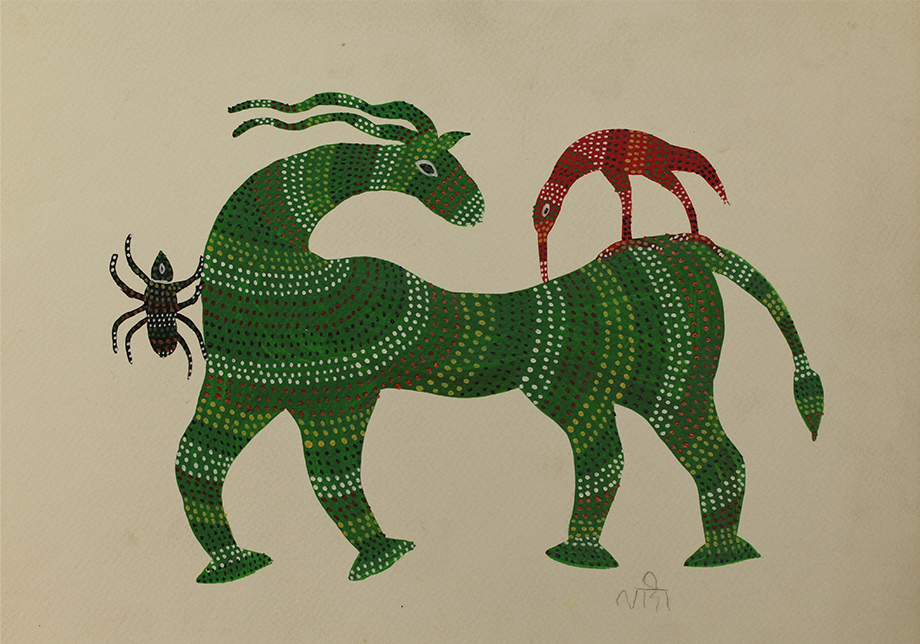
Painting by Lado Bai © Sarmaya Arts Foundation
Under the tutelage of Swaminathan, Lado Bai found her groove as an artist. She used the classic filler pattern of Bhil art, the multi-coloured dots, differently from contemporaries like Bhuri Bai. She creates subtle wave-like formations with them to give the impression of rolling movement. Her birds, especially, appear to take on fluid forms in flight.
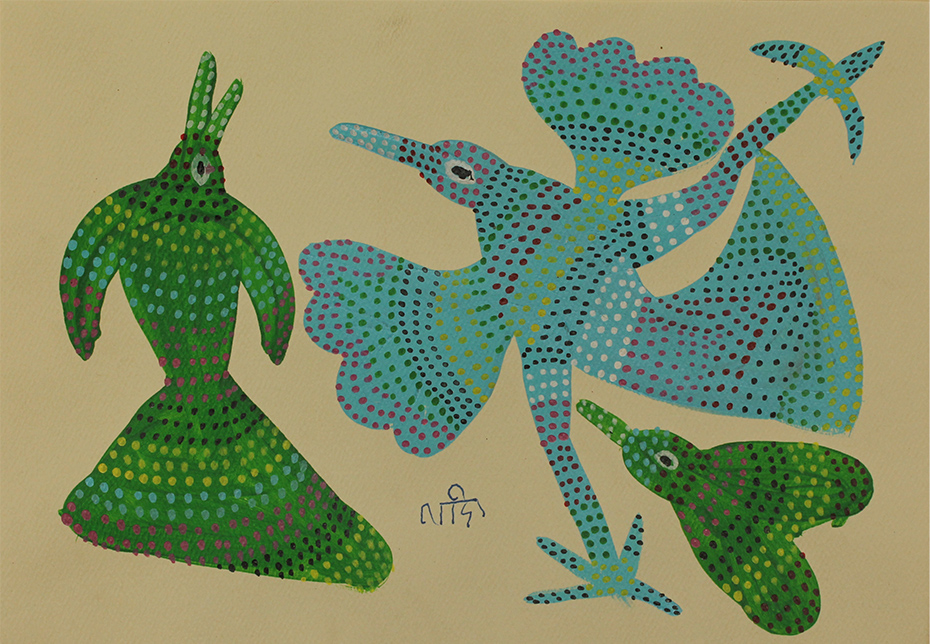
Painting by Lado Bai © Sarmaya Arts Foundation
Currently, Lado Bai lives and works in Bhopal at the Adivasi Lok Kala Academy, but her art has travelled to museums and galleries around India and abroad. In 2009, her paintings were part of an exhibition at Pundole’s, Mumbai called ‘Now That The Trees Have Spoken’, featuring three other pioneering artists from Central India: Bhuri Bai, Narmada Prasad Tekam and Ram Singh Urveti. In his curatorial note on the show, art critic Ranjit Hoskote observed that Lado Bai, “…delights herself in a dynamic asymmetry between some refined details and others deliberately left unfinished, fallow, to become.”
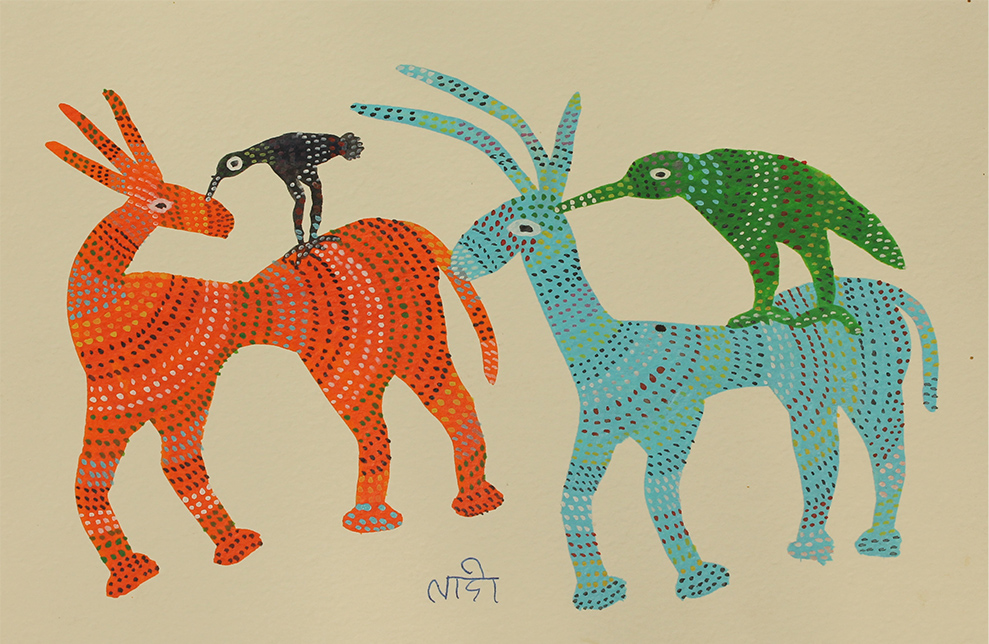
Painting by Lado Bai © Sarmaya Arts Foundation
It would seem that all these years later, the artist still paints like she once did at the end of a long day at work. With spirit, joy and complete abandon.
Lado Bai was one of the five artists whose Wikipedia profiles we edited as part of Sarmaya’s event for Art+Feminism 2019. Visit Lado Bai’s Wiki page by clicking here



